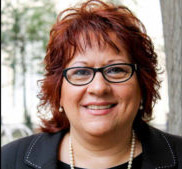On any given school day, New Jersey students line up and leave the building as part of mandatory emergency drills. These drills are a good thing. Students, staff, and emergency responders need a plan and need to practice it so they are safe and ready in the event of a real emergency.
But imagine this: while all the other children are safely lined up outside, one child is still in the building, waiting at the top of a staircase or in a bathroom stall. That was the plan for Kevin Nuñez, who serves on the New Jersey Council on Developmental Disabilities. Because he has cerebral palsy and uses a power wheelchair, Kevin’s emergency evacuation plan while he was a high school student was to be wheeled into a handicap stall in the ladies’ bathroom, where the lights were then turned out, and he waited in the dark with his back to the door.
These kinds of solutions are unacceptable.
Students with disabilities make up roughly 16 percent of the student body in New Jersey’s schools. It is impossible for these students to experience full participation and inclusion in our schools when their safety is in jeopardy. Because there are no national models for addressing the needs of students with disabilities in school crisis preparedness, most schools are not fully prepared to support students with disabilities, including sensory disabilities, medical and mobility disabilities, behavioral disabilities, and other unique challenges.
Since 2011, all New Jersey school districts have been required to develop a school safety and security plan. State guidance on school safety addresses 91 specific elements of planning, but only one even mentions the needs of students with disabilities.
Recognizing the urgency and criticality of this issue, the Council convened a Summit on School Safety last June, bringing together a broad and diverse group of more than 70 stakeholders and thought leaders representing the special education community and the emergency response community. We created a forum to discuss issues, challenges, and best practices. Our goal was to identify and explore issues, and generate tangible solutions to move the needle on school safety for students with disabilities.
Together, we talked. We brainstormed. We learned from each other. We found consensus, and we walked away with a plan.
While the issues were difficult to discuss, the personal stories hard to hear, and the scenarios hard to imagine, I was deeply moved by the level of the dialogue and the degree to which there was strong consensus for swift action.
We agreed that more comprehensive, multilevel planning is needed. We agreed that full participation on the part of students with disabilities in drills is vital. We agreed that school leaders and staff need more training and guidance. And we agreed that New Jersey must do a better job coordinating and sharing information, strategies, and best practice as it relates to emergency planning for students and staff with disabilities in school settings.
Importantly, we also agreed that there must be a greater emphasis on individualized planning at the student level. Even with a school-wide plan, many students with disabilities may need an individualized emergency action plan that ensures full integration, participation in practice drills, staff training, and an evaluation process to identify obstacles before they arise.
Rarely in the field of public policy can incremental action bring about changes that can save lives, but that is where we are today when it comes to school preparedness for students with disabilities.
Last month was recognized as National Preparedness Month. Let’s make sure New Jersey schools are ready to keep ALL students safe. Lives depend on it.
 Mercedes Witowsky is the Executive Director of the New Jersey Council on Developmental Disabilities. The Council’s mission is to assure that individuals with intellectual and developmental disabilities and their families have access to community services, individualized supports, and other forms of assistance that promote self-determination, independence, productivity, integration, and inclusion in all facets of life.
Mercedes Witowsky is the Executive Director of the New Jersey Council on Developmental Disabilities. The Council’s mission is to assure that individuals with intellectual and developmental disabilities and their families have access to community services, individualized supports, and other forms of assistance that promote self-determination, independence, productivity, integration, and inclusion in all facets of life.

 .
.